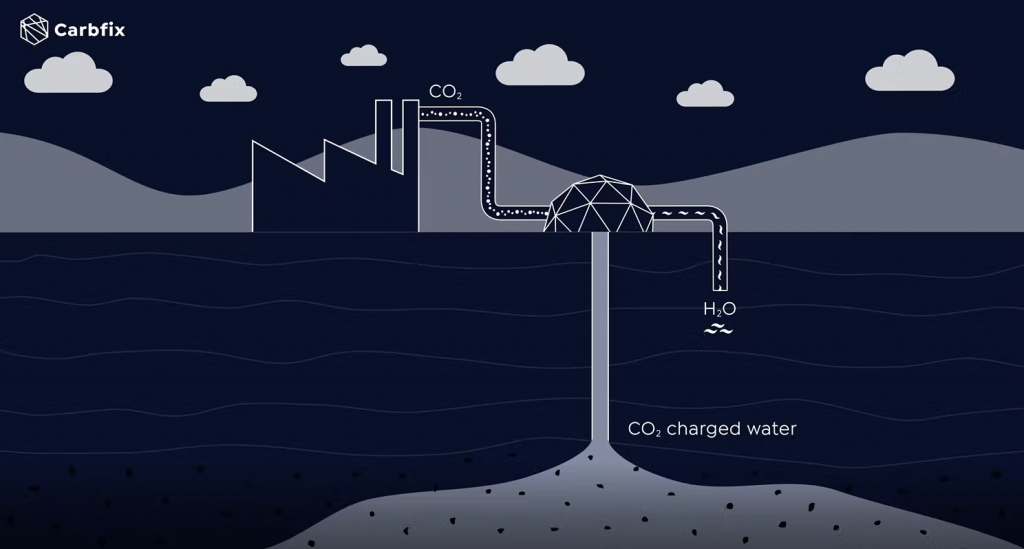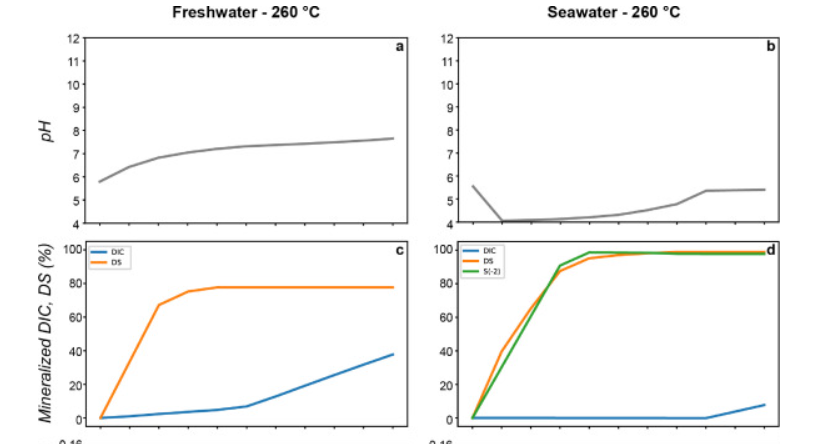Climate Change Soon to Be a Thing of the Past?
Written by: Colin Ward
Climate change is undoubtedly among the most prominent issues facing humanity in the 21st century, as its effects appear to be potentially devastating and inevitable. Many different solutions have been attempted, such as reducing emissions and planting millions of trees, but none have yet seen results that could change the course of humanity. A company by the name of Carbfix may have just found a solution:they have begun injecting carbon dioxide saturated water into specific underground rock formations, which given just a couple of years, nearly completely converts the carbon dioxide into a stable form that will last for thousands of years. Given the proper scaling, their technology and methods could prevent a large-scale calamity from even occurring in the first place.
The Process
Carbon can be found in incredible quantities within everyday rocks, and the process of storing it in a rock form is a natural one. By using water saturated with carbon dioxide, the carbon can be absorbed into the rock, reacting to form solids like calcium carbonate. This process is naturally very slow, as it relies on the acidity of the water to dissolve the rock around it, and allow materials to be freed up to react with the carbon. In nature, carbon dioxide is dissolved into water at a relatively slow rate, meaning that it is uncommon to find extremely acidic groundwater.
Scientists working with Carbfix attempted to accelerate this process. By increasing the amount of carbon dioxide stored within the water and using an ideal type of rock, they were able to greatly reduce the amount of time necessary for the mineralization of the carbon dioxide down to just two years. Increasing the quantity of carbon causes the water to become more acidic, meaning that the rock can be dissolved more quickly, therefore accelerating the rate of mineralization. This increase of carbon dioxide takes the form of carbonated water, which is much richer in carbon dioxide than normal water, and is similar to sparkling water or soda. By injecting the carbonated water into rock formations like basalt, scientists were able to further increase the mineralization rate by providing an environment full of the elements needed for the reaction, while also providing more surface area upon which mineralization can take place, as basalt tends to be fractured and porous.
Figure 1

A diagram of the Carbfix process
Source: Carbfix
Scalability
There are three necessary ingredients for the Carbfix process: carbon dioxide, water, and basalt or another similar rock formation. There is certainly no shortage of carbon dioxide for the company to work with, but the water and rock is a different story.
As of yet, Carbfixhas used only fresh water for the conversion process, but are researching the viability of salt water utilization. Although they haven’t conducted much research yet, the knowledge they have suggests that when salt water mixes with carbon dioxide, it becomes more acidic, releasing more reactants into the water and increasing the mineralization percentage over the same period of time. They will be attempting a demonstration of this process this year, and if it goes well, it would make the process much easier and accessible around the world.
Figure 2

Graphs depicting the pH and corresponding mineralization percentage associated with salt water and fresh water
Source: International Journal of Greenhouse Gas Control
The type of rock is the last component that needs to be accounted for. Conveniently, basalt is the most common rock type in the world, covering much of the ocean floor and around five percent of the earth’s surface. The company has put together a map of locations where this basalt is found, and where it may be feasible for their technology to be used.
Figure 3

A map displaying the areas that have basalt in quantities great enough for Carbfix’s technology to function
Source: Carbfix
Conclusion
While in its current state Carbfix’s technology is impressive, given their research on the use of salt water in the carbon dioxide storage process, the effectiveness of the technology, and the extreme scalability that is possible, this company could very well provide our planet with a solution to climate change. While it certainly isn’t the only option, it has the potential to be the best, and is definitely something to keep an eye on.
References and Sources
Fox, D. (2022, April 13). A bold plan to save the planet turns carbon dioxide into Stone. Science News for Students. Retrieved April 18, 2022, from https://www.sciencenewsforstudents.org/article/carbon-dioxide-turned-into-stone-save-earth-climate-change
How it Works. Carbfix. (n.d.). Retrieved April 18, 2022, from https://www.carbfix.com/
Marieni, C., Voigt, M., Clark, D. E., Gíslason, S. R., & Oelkers, E. H. (2021). Mineralization potential of water-dissolved CO2 and H2s injected into basalts as function of temperature: Freshwater versus seawater. International Journal of Greenhouse Gas Control, 109. https://doi.org/10.1016/j.ijggc.2021.103357
Mineral Storage Atlas. Orkuveitan Maps. (n.d.). Retrieved April 18, 2022, from https://orkuveitan.maps.arcgis.com/apps/View/index.html?appid=ab4d5798f716486c9b9041277e97cf1d